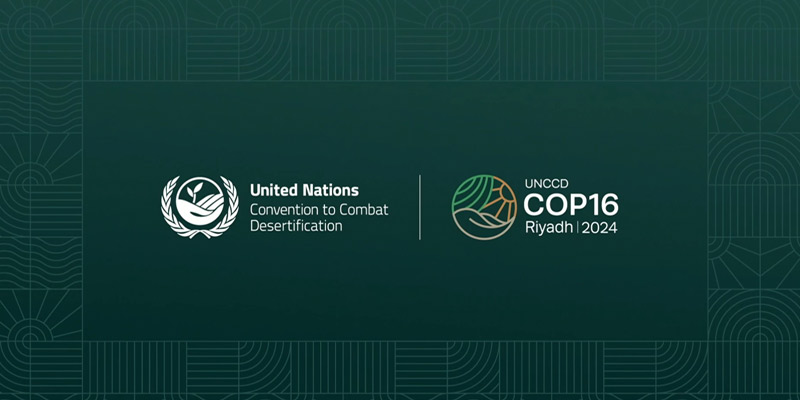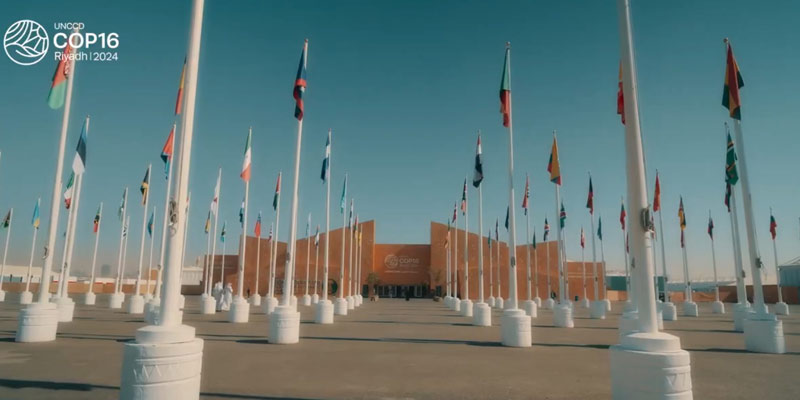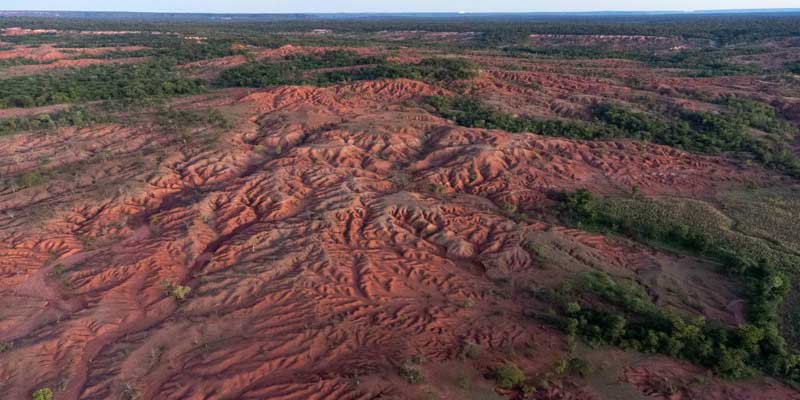- World
- Dec 15
UNCCD COP16 charts a path for global action on land, drought
• After two weeks of intense negotiations on how to tackle land degradation, desertification and drought, the largest and most inclusive United Nations land conference wrapped up in Riyadh, Saudi Arabia.
• The nearly 200 countries convening at the 16th Conference of the Parties (COP16) to the United Nations Convention to Combat Desertification (UNCCD) committed to prioritise land restoration and drought resilience in national policies and international cooperation as an essential strategy for food security and climate adaptation.
• While parties failed to agree on the nature of a new drought regime, they adopted a strong political declaration and 39 decisions shaping the way forward.
• Nations also made significant progress in laying the groundwork for a future global drought regime, which they intend to complete at COP17 in Mongolia in 2026.
• According to UNCCD’s newly released World Drought Atlas and Economics of Drought Resilience reports, droughts affect the livelihoods of 1.8 billion people worldwide, pushing already vulnerable communities to the brink.
• They also cost an estimated $300 billion per year, threatening key economic sectors such as agriculture, energy and water.
• The first-ever UNCCD COP in the Middle East and North Africa provided an opportunity to shine a light on the specific challenges facing the region and bring to the fore innovative solutions to land degradation and drought.
• During the Conference, participants heard that UNCCD estimates that at least $2.6 trillion in total investments are needed by 2030 to restore more than one billion hectares of degraded land and build resilience to drought. This equals $1 billion in daily investments between now and 2030 to meet global land restoration targets and combat desertification and drought.
Key outcomes of COP16:
• More than $12 billion were pledged to tackle desertification, land degradation and drought around the world, especially in the most vulnerable countries.
• A prototype launch of the International Drought Resilience Observatory, the first ever global AI-driven platform to help countries assess and enhance their capacity to cope with harsher droughts.
• Mobilisation of private sector engagement under the Business4Land initiative.
• The creation of designated caucuses for Indigenous Peoples and for local communities to ensure their unique perspectives and challenges are adequately represented.
• A continuation of the Convention’s Science-Policy Interface to strengthen science-based decision-making.
• New pledges for large-scale land restoration and drought preparedness were announced, such as the Riyadh Global Drought Resilience Partnership which attracted $12.15 billion to support 80 of the world’s most vulnerable countries in building their resilience to drought, including a $10 billion pledge from the Arab Coordination Group.
• The Great Green Wall (GGW), an African-led initiative to restore 100 million hectares of degraded land, also mobilised €11 million from the Italian government for landscape restoration in the Sahel and €3.6 million from the Austrian government to strengthen the coordination and implementation of the initiative across 22 African countries. The drive is part of the GGW Accelerator, a UNCCD-supported effort to achieve the ambitions for a greener, more prosperous Sahel.
• Additionally, the United States and several partner countries and organisations announced total investments of nearly $70 million to advance the Vision for Adapted Crops and Soils (VACS). The initiative looks to build resilient food systems grounded in diverse, nutritious, and climate-adapted crops grown in healthy soils.
The United Nations Convention to Combat Desertification
• The United Nations Convention to Combat Desertification (UNCCD) is the sole legally binding international agreement linking environment and development to sustainable land management.
• The Convention addresses specifically the arid, semi-arid and dry sub-humid areas, known as the drylands, where some of the most vulnerable ecosystems and peoples can be found.
• The Convention was adopted in Paris on June 17, 1994 and entered into force on December 26, 1996 after the 50th ratification was received.
• It is the only legally binding framework set up to address desertification and the effects of drought.
• There are 197 Parties to the Convention, including 196 country Parties and the European Union.
• The Convention’s 197 Parties work together to improve the living conditions for people in drylands, to maintain and restore land and soil productivity, and to mitigate the effects of drought.
• Parties to the Convention meet in Conferences of the Parties (COP) every two years, as well as in technical meetings throughout the year, to advance the aims and ambitions of the Convention and achieve progress in its implementation.
• It unites governments, scientists, policymakers, private sector and communities around a shared vision and global action to restore and manage the world’s land for the sustainability of humanity and the planet.
• The UNCCD is particularly committed to a bottom-up approach, encouraging the participation of local people in combating desertification and land degradation.
• The UNCCD Secretariat facilitates cooperation between developed and developing countries, particularly around knowledge and technology transfer for sustainable land management.
Manorama Yearbook app is now available on Google Play Store and iOS App Store



